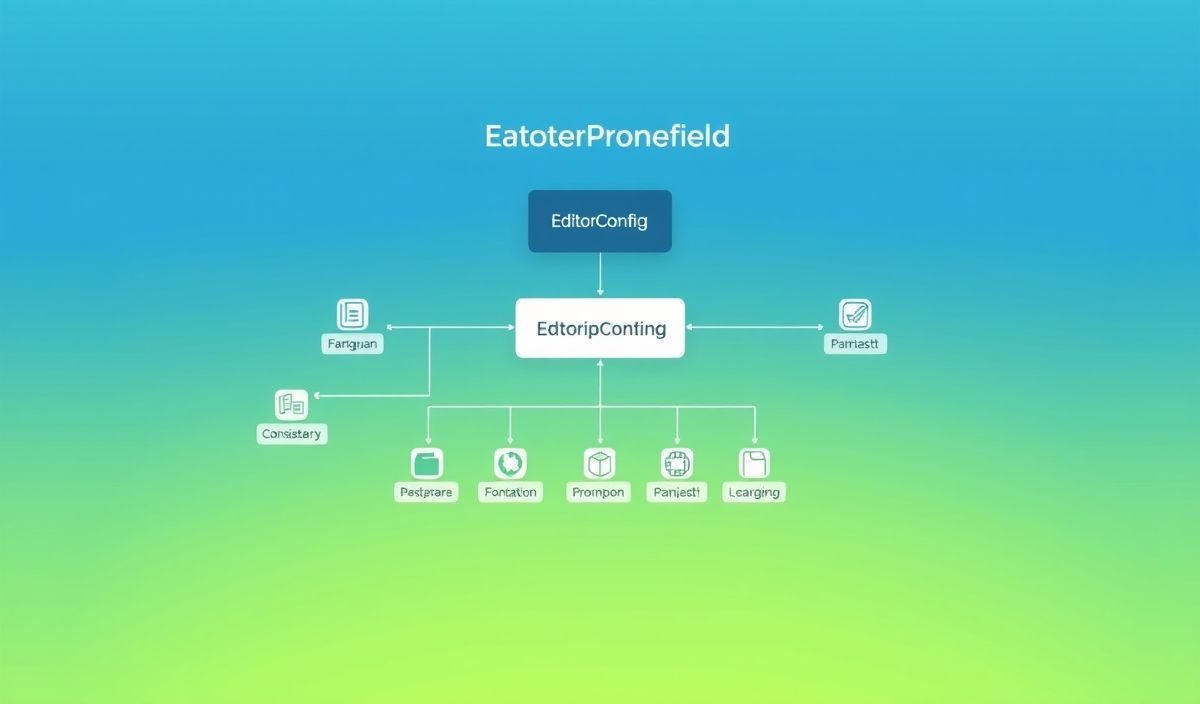Introduction to EditorConfig
EditorConfig helps maintain consistent coding styles across various editors and IDEs. It is a simple yet powerful tool to standardize code formatting. This guide introduces EditorConfig and explains useful API functions with detailed code snippets.
What is EditorConfig?
EditorConfig is a file format and collection of text editor plugins to help maintain consistent coding styles between different editors and IDEs. The .editorconfig file contains styles like indentation, charset, and line endings to be enforced.
Sample .editorconfig File
# EditorConfig is awesome: https://EditorConfig.org root = true [*] indent_style = space indent_size = 4 end_of_line = lf charset = utf-8 trim_trailing_whitespace = true insert_final_newline = true [*.md] trim_trailing_whitespace = false
EditorConfig APIs and Examples
The following are some useful EditorConfig APIs with examples:
1. get_properties(filename: str)
This function retrieves EditorConfig properties for a given file.
import editorconfig filename = 'example.py' props = editorconfig.get_properties(filename) print(props)
2. load(path)
Loads the EditorConfig file from the specified path.
from editorconfig import EditorConfig
config = EditorConfig.load('/path/to/.editorconfig')
print(config.sections)
3. parse(filepath)
Parses a given file and returns the settings.
import os from editorconfig import EditorConfig config = EditorConfig() result = config.parse(os.path.join(os.getcwd(), 'example.py')) print(result)
4. get_config(filepath)
Returns the unified form of EditorConfig settings for the given file.
from editorconfig import get_config
config = get_config('example.py')
print(config)
App Example Using EditorConfig
Here is an example of a small app demonstrating the usage of EditorConfig APIs:
import editorconfig
import os
def format_code(file_path):
config_path = os.path.join(os.getcwd(), '.editorconfig')
config = editorconfig.get_config(file_path)
with open(file_path, 'r') as file:
lines = file.readlines()
formatted_lines = []
for line in lines:
if config['trim_trailing_whitespace']:
line = line.rstrip() + '\n'
formatted_lines.append(line)
with open(file_path, 'w') as file:
file.writelines(formatted_lines)
print(f"Formatted {file_path} according to .editorconfig settings")
# Usage
format_code('example.py')
In this example, the format_code function trims trailing whitespaces in the given file according to the .editorconfig settings. This approach can be extended to implement other formatting rules as well.
By using EditorConfig, you can ensure consistent coding styles across your project, making collaboration easier and reducing time spent on code reviews.
Happy coding!
Hash: bcd6bfb5ceb133a2eb1a35bf0a4bed723f32f2551148b251fd7b5d97005e8293




